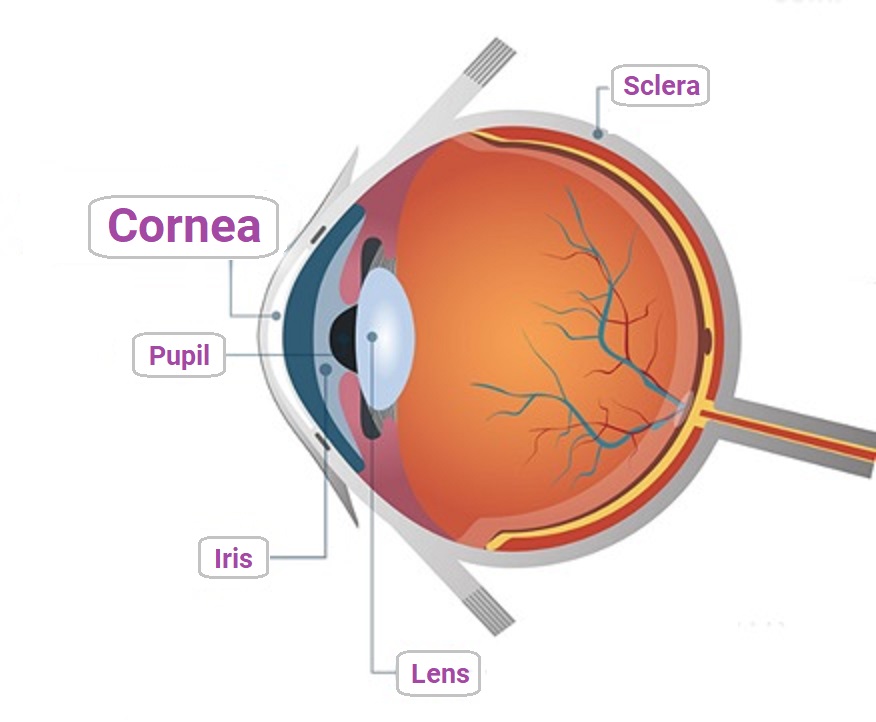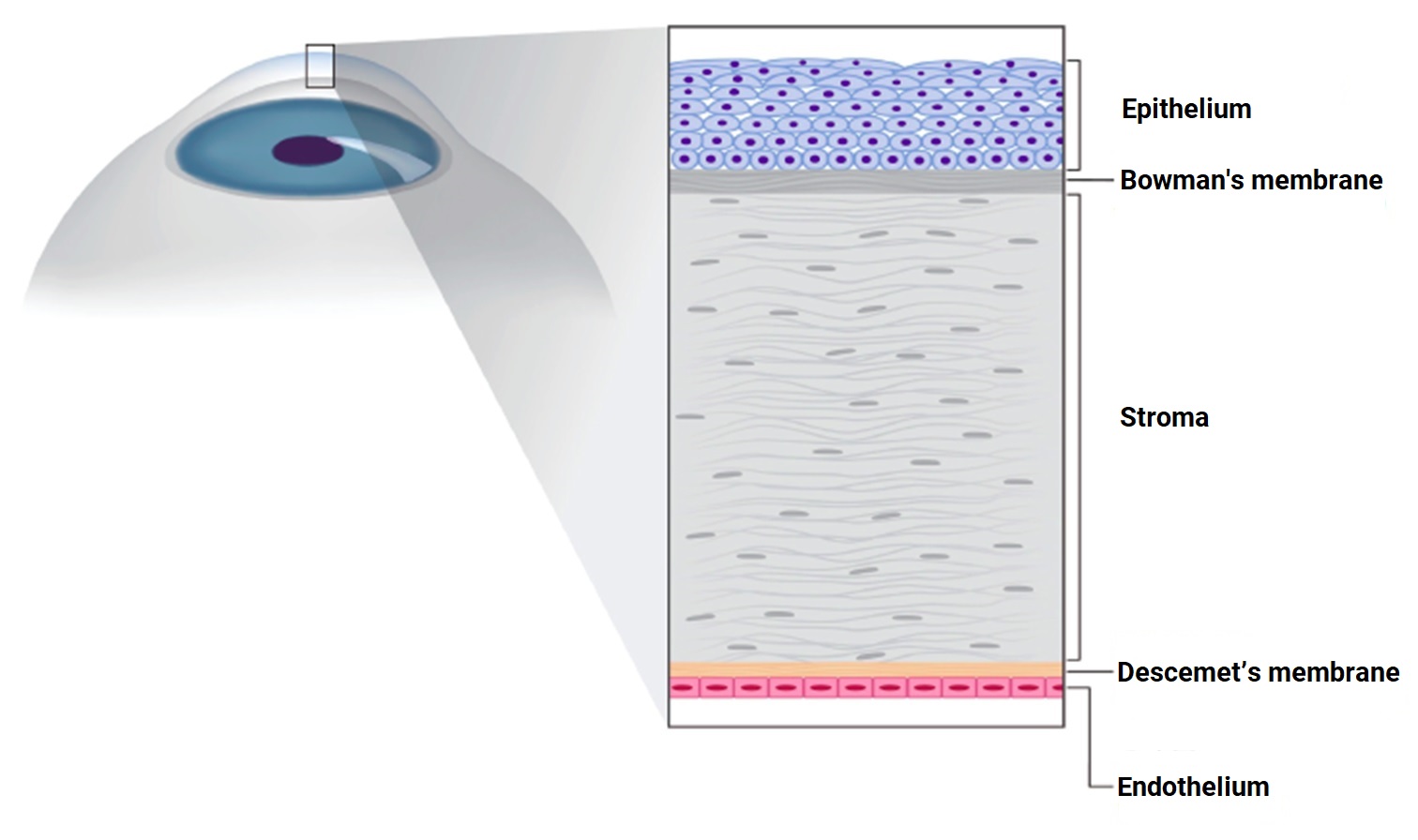
The CORNEA is located at the front of the eyeball. It not only protects the eye from trauma and infection, but is also the first and strongest refractive medium to allow light to enter into the eye. Besides the opacified lens, cornea is the only other tissue in the eye that can be replaced. As deceased corneal donation is not widely accepted, not many patients can receive corneal transplant surgery to restore their sight. Cornea is very crucial for our sight and we have to protect it carefully.
Cornea is divided into five layers, in order from the outside to the inside as below:

Conditions that cause the cornea to no longer be transparent, or may even cause pain. These conditions may require corneal transplant surgery to restore the vision for patients.
External problems: infections, inflammations, accidents (hit by a hard object or splashed with a corrosive liquid) can perforate or leave a scar on the cornea.
Structural problems: some genetic conditions or frequent eye rubbing may loosen the corneal structures and cause a conical protrusion in the cornea (keratoconus), where light rays cannot be properly focussed.
Congenital problems: such as when cornea endothelial cells are lost too quickly and fluid (edema) is trapped in the cornea, or there is abnormal deposition of material in the cornea, causing clouding of the cornea.
Other ophthalmic surgery problems: if the patient has undergone other complex or multiple eye surgeries, too many cornea
endothelial cells may be lost and fluid (edema) may be trapped and cannot be
pumped out of the cornea.
